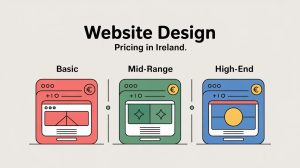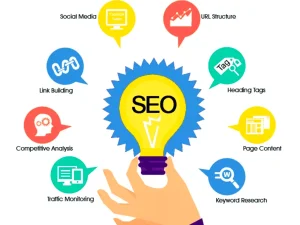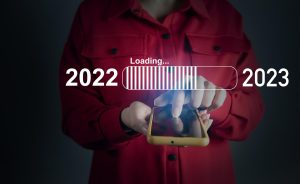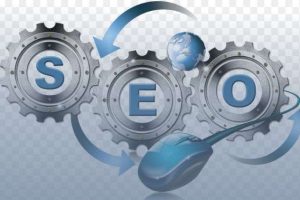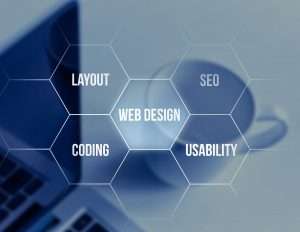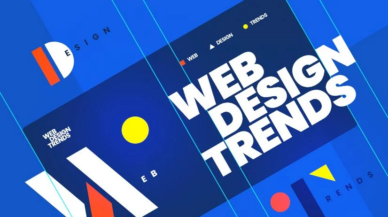Have you ever visited a website and felt immediately drawn in, not just by the content, but by how you interacted with it? In the simplest terms, interactive elements are parts of a Website Design that users can engage with.
Interactive elements in the website can be a great way to boost user engagement. These elements allow users to navigate your website more meaningfully, which can help keep them on your site longer and make them more likely to return.
Today, we’ll explore how these magical touches can skyrocket your site’s user engagement.
Why Are Interactive Elements Necessary For Website Design?
For many reasons, interactive elements have become necessary for Attractive Website Design, significantly impacting user engagement, user experience, and overall website performance.
Here’s why they are so important.
- Generating Leads: Interactive forms and surveys can collect contact information from potential customers. This information can then be used to follow up with leads and generate sales.
- Promoting Products Or Services: Interactive elements like product configurators and demos can promote your products or services and help users learn more about them. This can help increase sales, revenues, and conversions.
- Building A Community: Interactive elements like forums and chat rooms can be used to build a community around your brand. This can create a more regular and loyal customer base and generate positive word-of-mouth.
- Increased User Engagement: Interactive elements allow users to interact with your website more meaningfully, which can help keep them on your site longer and make them more likely to return.
- Improved User Experience: Interactive elements can also enhance the user experience by making it easier for users to find the information they need and to complete tasks.
- Enhanced Brand Image: Interactive elements can also help to enhance your brand image by making your Website Design Ireland appear more modern, innovative, and engaging.
- Improved SEO: Interactive elements can also help to improve your website’s search engine rankings (SEO). Search engines like Google favor websites that provide a good user experience, and interactive elements can help to improve this.
Given these points, interactive elements are not just decorative. They’re tools that engage users on different levels, creating more enjoyable, memorable, and effective online experiences. Web designers in Dublin significantly impact a website’s success, making them an indispensable feature in modern website design Ireland.
Effective Ways To Make Your Website Design More Interactive
Making your website more interactive is vital to increasing user engagement, improving user experience, and, ultimately, driving conversions.
Here are effective strategies and elements you can incorporate to boost the interactivity of your website.
- Use Forms And Surveys: Forms and surveys are the best way to collect user feedback and learn more about their needs. They can also generate leads and promote your products or services.
- Add Quizzes And Calculators: Quizzes and calculators are another fun and engaging way to interact with your users. They can be used to assess their knowledge, provide them with personalized recommendations, or help them to make decisions.
- Use Interactive Images And Videos: Interactive images and videos allow users to explore your content in a more immersive way. You can use them to create slideshows, galleries, and other engaging experiences.
- Gamify Your Website: Gamification involves adding game-like elements to your website, such as badges, leaderboards, and rewards. This can motivate users to interact with your site more often and to achieve specific goals.
- Integrate Social Media: Social media integration allows users to send their content to friends, family, and followers. This can increase website traffic and generate buzz for your brand.
- Use Animations And Transitions: Animations and transitions can add visual interest to your Attractive Website Design and make it more engaging for users.
- Use Micro interactions: Micro interactions are small, subtle interactions that make your website more responsive and alive. For example, a button that changes color when you hover over it is a micro interaction.
- Use Parallax Scrolling: Parallax scrolling is a technique that creates a depth effect when scrolling through a web page. This can make your website more visually appealing and engaging.
- Use Storytelling: Storytelling is a powerful way to emotionally engage and connect with users. You can use storytelling on your website through blog posts, pictures, videos, and other content.
- Use Personalization: Personalization is tailoring your website content and experience to each user. This can be done through user surveys, browsing history, and location data.
In conclusion, interactive elements are like the cherry on your digital sundae. They add that extra appeal, ensuring that users visit your site and engage with it. Dive into the world of interactivity and watch your Website Design come alive!
In such a competitive world, finding an SEO company Dublin that can help increase engagement and conversion is daunting. CK Website Design knows your needs and is here to help you achieve your digital goals through interactive elements. So don’t think much! Visit our website and get a consultation for a web design now!
FAQs
What are the elements of attractive website design?
A website with consistency, simplicity, mobile-friendliness, and interactivity looks more appealing and attractive. These elements play a vital role in making any website appealing.
Why do designers emphasize interactive elements on the website?
Web design in Ireland is thriving primarily due to a combination of technological advancement, a vibrant creative community, and strong governmental support for the tech industry.
Why is creativity necessary for a website?
Interactive elements can be vital for designers who want to improve the user experience, increase engagement, build brand awareness, and differentiate from the competition.



